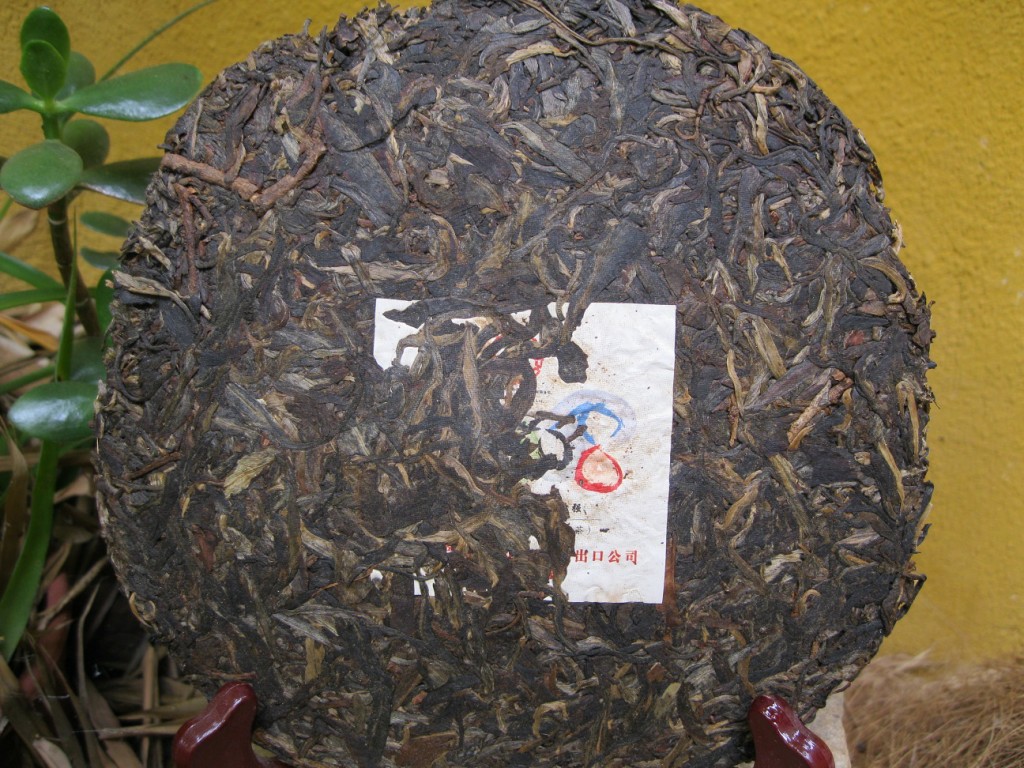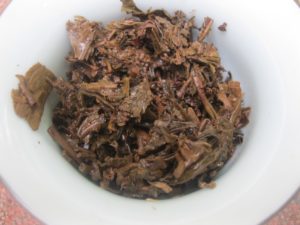Wax to Sandalwood: KMTF’s Beijing Olympics in 2019

This morning I had a fascinating session with the ’07 Beijing Olympics by KMTF, the overlooked factory among the “big three.” I was in Beijing in the early ’90s when China first made an Olympic bid, so I wanted to capture a bit of this moment actualized in ’08. What better way than a commemorative puerh cake, not counting the t-shirt my buddy gifted me?
I’ve had the ’07 Beijing Olympics since ’14, having drunk only one cake episodically amidst the rest in the stash. Other postings on Beijing Olympics have noted just how compressed this production is. I had to use my chisel to wrest a couple chunks from the area comprising the hole weighing 8.2g, about two grams more than what I usually use in my newly anointed “Tasting Gaiwan.”
Dry in the warm wan, its incense aroma evoked the ’10 Tiger Tuo of two years ago. Breaking with all convention, I brewed the first cup for about 5m in water initially at 208. It was in no way excessive. The same sandalwood aroma was evident in the taste. Enigmatic. The next three rounds were brewed similarly with the colour of the liquor generally lighter than infusions in clay given about half the infusion time. Whether attributable to the being part of the cake core or the gaiwan, I cannot attest.
Altogether, I cashed out after 14 infusions of varying times and sharing with a 10:30 patient and an 8:00pm wife. This cake has always captivated me (and probably always will). Though I haven’t found it to be the best tasting ever, I’ve always found it to be one of the most intriguing. Now that there’s this sandalwood, I’m positively stoked. The ’10 Tiger Tuo mellowed through a number of stages but from the ferocious end of the spectrum. Conversely, Beijing Olympics is quintessentially KMTF. They don’t do “kick-yer-arse” taste. I’ve tasted KMTF productions from the turn of the century that however old they tasted did not venture beyond Zen. Therefore, the presence of sandalwood notes suggests that it might transform into the dark richness that the best brash or Zen productions fade into.
Deeper infusions of the Beijing Olympics (5 < ) were fruity and minerally Zen. I also detected back notes of talcum powder with tinges of ash, not in any smoky sense. Talcum powder is a recurrent trait of KMTF and YPH craftsmanship. There is sweetness, and the astringency is not noteworthy. It is their characteristic Lincang/Menghai combo, with the ratio strongly in favour of Lincang. What I don’t get is how this cake hasn’t appreciated compared to similar productions.
The Beijing Olympics puerh cake, mercilessly chopped and even more oppressively compressed, probably was not conceived as a political metaphor. Besides, some of the best productions I’ve had have been unsightly or super compact. I think we all know good productions when we know them. Then there are those we endeavor to get our heads around within the capsule of storage temperature and age. Now I’m stupid curious.
In the past year, I’ve had the fortune to taste both young Blue and Red Marks from the turn of the century. None of ’em make me go wow like the Tulin productions seven year’s younger. I’ve been waiting for some of the Zen ones in the collection to turn root beer on me. This hasn’t hit that mark but I’ve good reason to believe that it will given these sandalwood notes.

